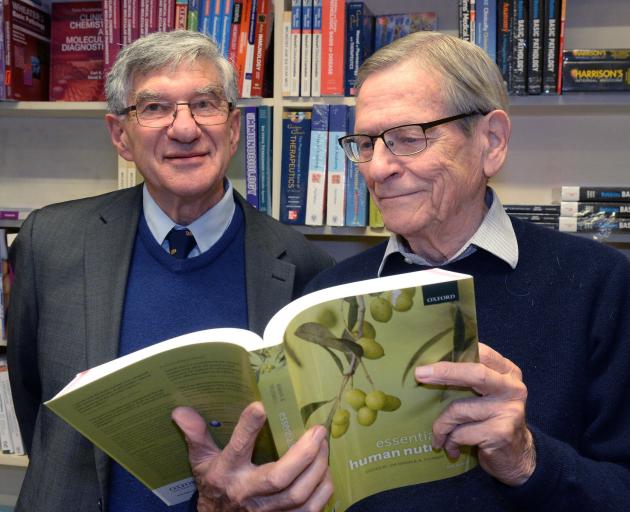
With a plethora of advice about foods, what to eat and what not to eat confusing people and professionals alike, it is not surprising a nutrition textbook is becoming more popular, University of Otago professor in human nutrition Jim Mann says.
Prof Mann and Sydney-based colleague Prof Stewart Truswell launched the fifth edition of their Essentials of Human Nutrition in Dunedin last week.
The first edition was released in 1998 and sold about 2000 copies, Mann believed. The fourth edition, released in 2012, sold about 7000.
''This one has become more and more successful. It's the best-selling nutrition textbook of its kind in the United Kingdom,'' he said.
In the time since the first book had been released, the science on nutrition had evolved.
''Things are quite different. At the time of the first edition, nobody questioned the importance of saturated fat in the diet, for example, whereas now we have all these alternate diets that have appeared on the scene.
''What is the evidence for them? It is minimal.''
He admitted he could not find his own copy of the first edition, but knew there had been quite a few changes, especially regarding the role of sugar, an area Prof Mann had worked in since the 1970s.
''The change has been enormous. In the second, third and fourth editions it was all about rotted teeth ... now sugar is thought to do terrible things to you.''
There has also been the introduction of a range of popular diets, including high-fat and low-carbohydrate diets and interest in the diets of other cultures, such as the Mediterranean.
Science has also made advances, such as in the role of vitamin D, the role of nutrition in cancer and the link between obesity and cancer.
As a result, new chapters had been added on public health approaches to implementing dietary recommendations, food fortification, food in hospitals and dietary patterns.
Other chapters had been rewritten or extended to cover developments in genetics, nutritional crises, cardiovascular disease and feeding young children.
One of the reasons Profs Mann and Truswell were convinced to put together the latest edition was the need for a reference book on nutrition - somewhere people could go if they needed reliable information.
Nutrition is increasingly recognised as playing a role in many areas, so having a reference for pharmacists, doctors, those in sports medicine and fitness and other health-related sectors is seen as important.
''Health professionals and food scientists need to be able to disentangle scientifically established nutrition processes from the morass of misinformation available in the public domain.''
In the United Kingdom, there is talk about giving copies of the book to pharmacists who are increasingly being called on for nutritional advice.
''I'd love to give a free copy to every pharmacy here, but I only get two.''
The book was also written in a way that could help a ''lay person'' decipher some of the plethora of nutritional information available these days from a variety of sources.
''It'll allow a intelligent person to evaluate what someone is telling them.''












